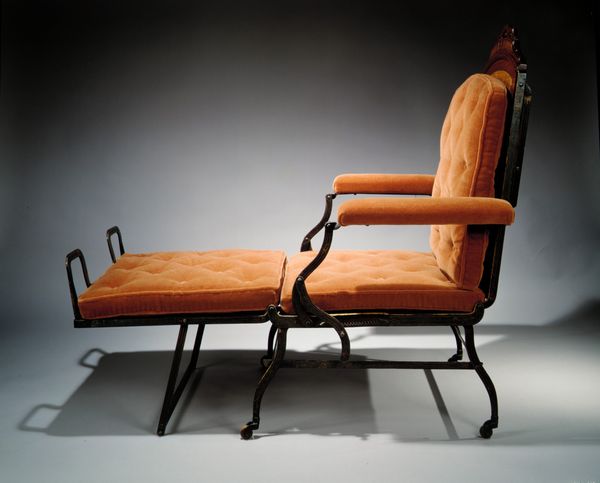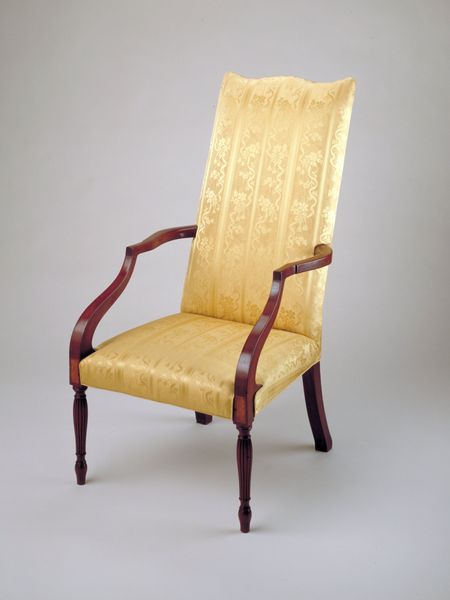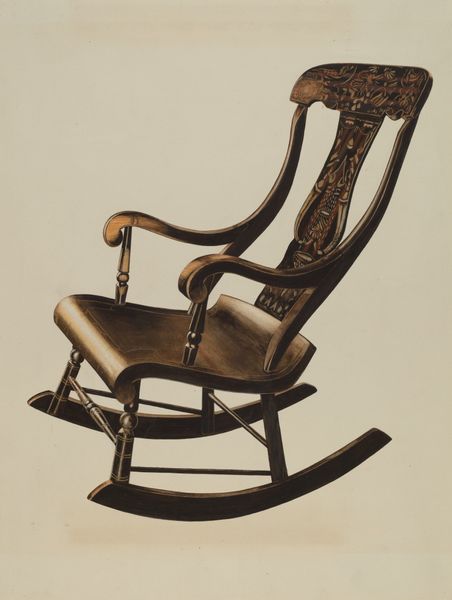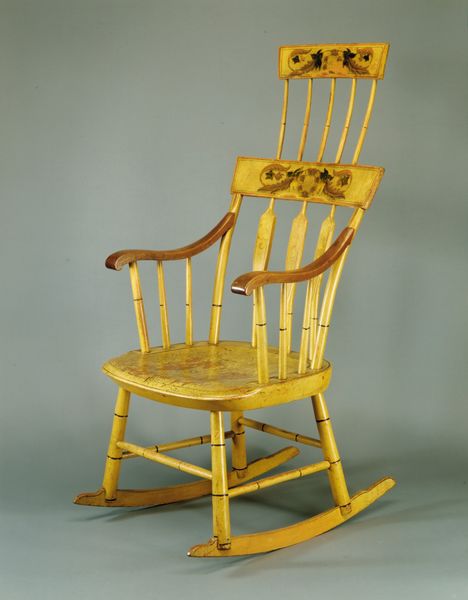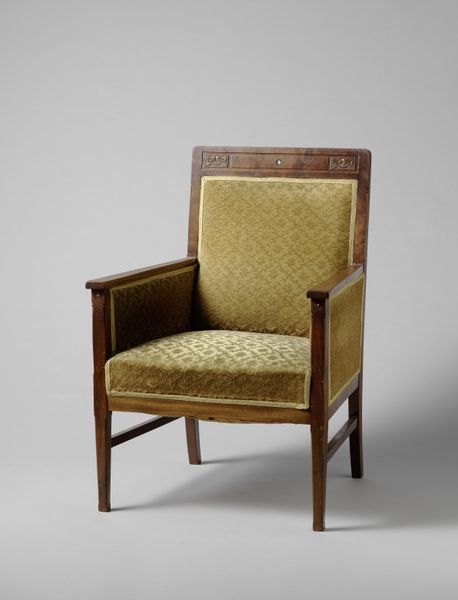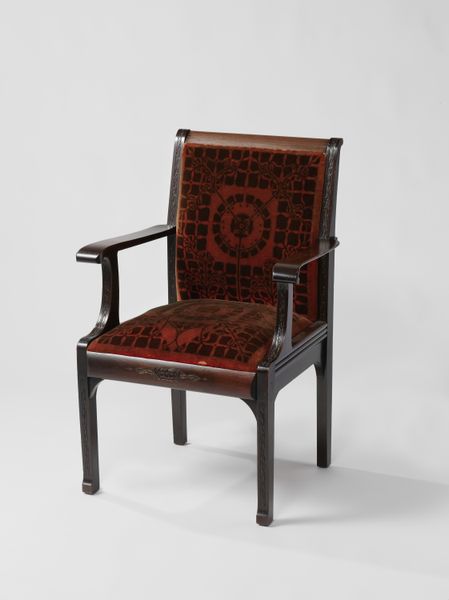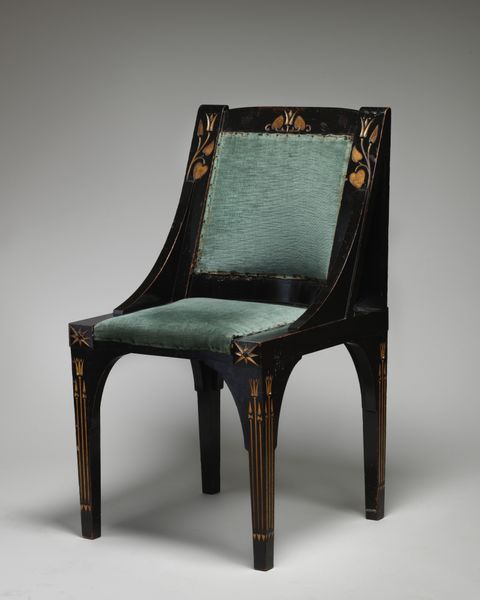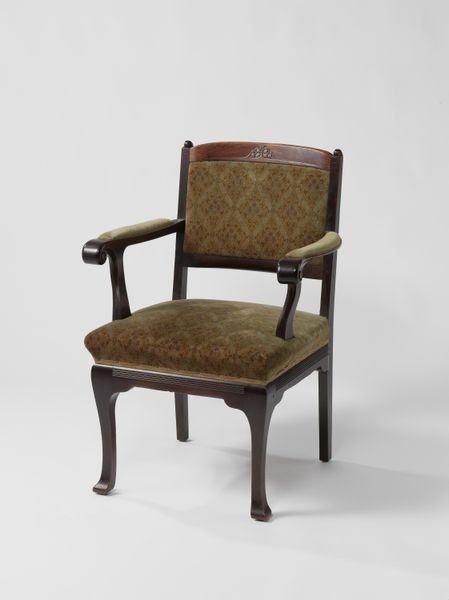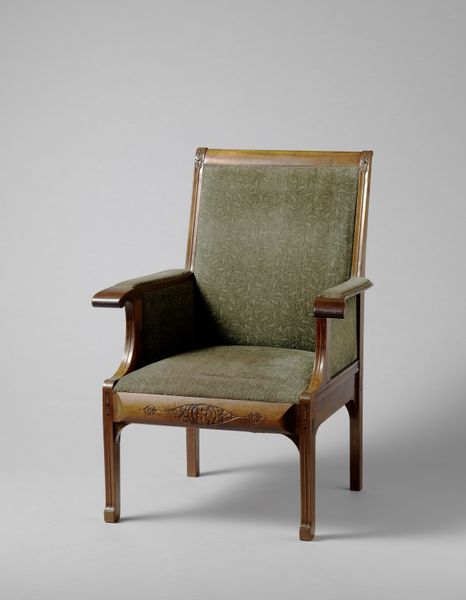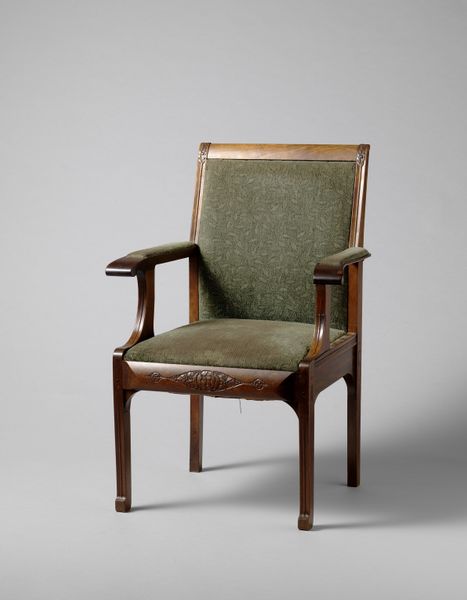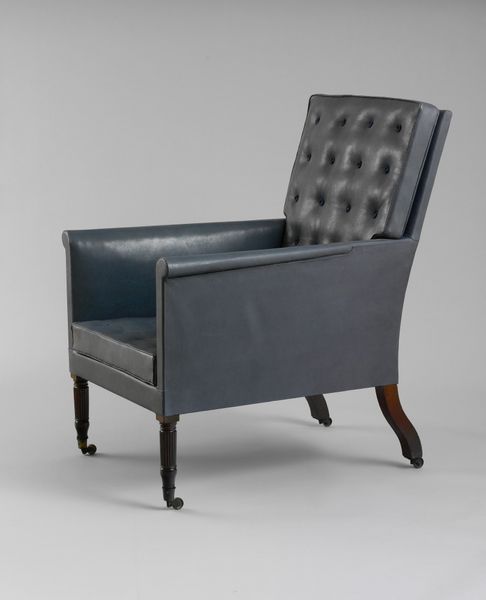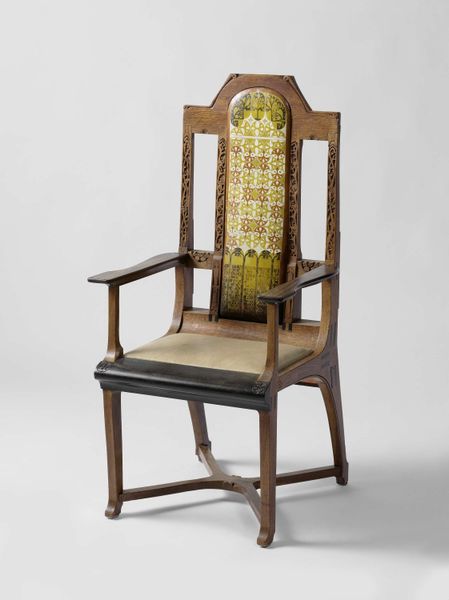
mixed-media, textile, wood
#
mixed-media
#
textile
#
united-states
#
wood
#
decorative-art
Dimensions: 38 1/2 x 26 x 33 in. (97.8 x 66 x 83.8 cm)
Copyright: Public Domain
Curator: Well, isn’t this "Reclining Armchair," dating between 1867 and 1876, quite striking? It’s currently housed here at the Metropolitan Museum of Art. The piece is attributed to George Jakob Hunzinger, combining wood, textile, and mixed media. Editor: It does have a certain peculiar charm. I’m immediately drawn to the embroidered textile panel; it gives the piece a distinct visual weight, doesn't it? The overall feeling is very plush and ornate, like something out of a Victorian novel. Curator: Absolutely. Hunzinger's pieces were often showcases of comfort and status. The United States was experiencing a surge in industrialization and consumer culture during that period, so the market for domestic goods was highly competitive. This armchair is evidence of that market. Editor: And notice how the dark, embroidered fabric depicts flora and fauna almost blending together? Are these specific flowers or creatures, or just imagined elements? There's something slightly unsettling in their sinuous shapes. Is there an invitation or perhaps a slight repulsion implied? Curator: Good eye! Symbolism was hugely popular in decorative arts at that time. Floral motifs often carried sentimental meanings related to emotions and memories. Its symbolism also reflects changing social ideas about wealth, labor and class as applied to leisure pursuits, particularly with an emphasis on feminine associations with handwork, and decoration. Editor: Yes, it also suggests an intriguing tension: on the one hand, you want to sink into this velvet comfort; on the other, you’re confronted with this elaborate imagery of flowers and curious fauna. I wonder about the owner of this chair? A man, perhaps enjoying this masculine form? Or maybe a fashionable woman receiving callers in her parlor? Curator: It is open to interpretation. What do you think someone encountering this piece might take away in the present day? Editor: Perhaps how taste evolves over time and becomes imbued with specific class associations? Now that I'm reflecting on this item, I recognize its intriguing, subtly disquieting aesthetic impact.
Comments
No comments
Be the first to comment and join the conversation on the ultimate creative platform.
